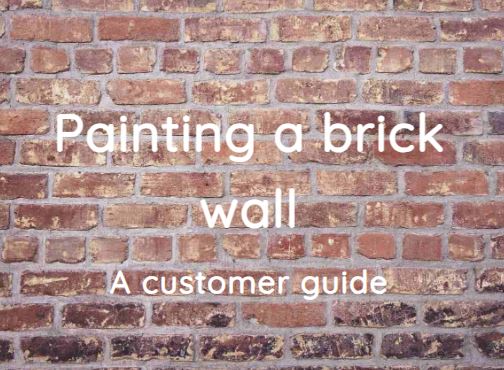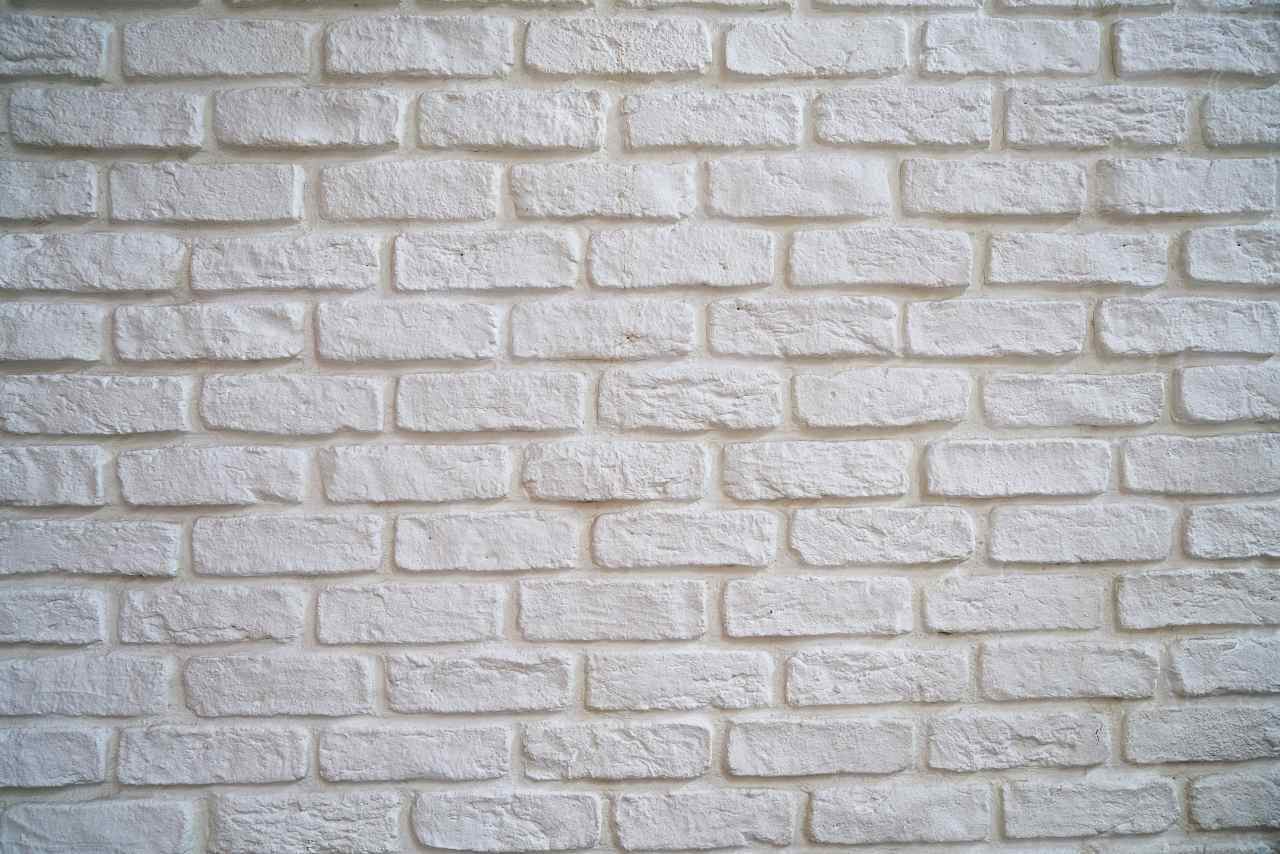Painting a Brick Wall: A Customer Guide
Posted by Sarah, Celtic Sustainables on 3rd Jul 2025
Are you considering painting your brick wall or brick work on a building but unsure where to start? Sometimes, conflicting online advice can make the decision more confusing. This guide aims to answer your common questions and help you achieve a professional-looking finish.
It's important to recognize the beauty of brick walls in their natural form. Many people, including us, appreciate their charm and character. However, we understand that brick walls may not fit everyone's aesthetic preferences or might seem worn out or mismatched with the rest of your building. In these situations, painting can be an effective way to unify different surfaces and refresh their appearance.
In this guide, we'll cover:
- When and why to paint interior and exterior brick walls.
- How to prepare the walls
- Choosing the right type of paint
- Preparation tips for a smooth finish
- Painting techniques to ensure durability and beauty
- Paint options at Celtic Sustainables that are suitable for brick walls (internal and outdoor brick paint options)
- Follow the guidelines – ALWAYS.
- Timing Considerations
Read on to learn how to transform your brick walls with confidence and achieve stunning results.
When and Why to Paint a Brick Wall
A well-maintained brick wall can look impressive, but weathering can cause fading or discolouration over time. Dirt and stains may accumulate, making a once-beautiful property appear tired and aged. If it has been painted before, the paint might be old, peeling, or chipping, and needs removal.
Painting a brick wall provides protection from the elements, enhances its appearance, and allows for personalisation and style options. It also guards against moisture, preventing mould and mildew growth. Moreover, it can increase property value, improve market appeal, and simplify maintenance in the long run. Isn’t that wonderful? We all want to take pride in our homes, create a welcoming space, and enhance the exterior look of our property.
In short, these are the strong reasons to paint a brick wall:
- Aesthetic Enhancement (Updating the look of an older home)
- Protection and Longevity (Shielding against moisture infiltration)
- Increasing Property Value (With long-term maintenance benefits)
A Step-by-Step Guide to Preparing Brick Walls for a Fresh Coat of Paint
Here’s how to ensure your brick surfaces are primed and ready for a stunning finish.
- Begin by thoroughly cleaning the brick surface: Use a stiff-bristle brush or a pressure washer to remove years of dust, dirt, and grime that have settled into the crevices. As you scrub, watch as the walls regain their character, revealing the textured patterns underneath.
- Inspect for Damage: Take a close look at the brick and mortar. Check for any signs of cracks, crumbling, or loose bricks that might compromise the integrity of your painting project. Address any issues by applying mortar or filler where needed, ensuring a solid foundation for your paint.
- Wash Away the Residue: Following your inspection, mix a solution of warm water and mild detergent to wash the walls. This step will eliminate any lingering residues and prepare the surface for better paint adhesion. Rinse thoroughly, allowing the walls to dry completely, soaking in the sunlight and fresh air.
Choosing the right type of paint – These paints at Celtic Sustainables are suitable for brick surfaces
We at Celtic Sustainables have many suitable paint choices, and we’d be more than happy to discuss the different options with you.
Consider using these top-rated paints for painting onto an external brick surface:
Best outdoor paint for brick:
Beeck Renosil Fine Exterior Silicate Masonry Paint is known for its great coverage and suitability for traditional and modern buildings. The paints are mould-resistant and use natural UV-resistant pigments. A priming coat of Beeck Fixative is needed to stabilise the substrate before painting. Samples are available.
traditional and modern buildings. The paints are mould-resistant and use natural UV-resistant pigments. A priming coat of Beeck Fixative is needed to stabilise the substrate before painting. Samples are available.
Graphenstone - GCS Exterior Heritage Silicate Masonry Paint offers a premium, breathable coating suitable for lime renders, stone, brick substrates, and previously painted surfaces. Ambient Primer L42 equalises and stabilises brick walls while maintaining high breathability; this primer is essential before applying the silicate masonry paint. Samples available.
Keim - Soldalit Exterior Silicate Paint is a mixture of silica sol and potassium silicate binding agents. It creates a high-quality, multi-purpose exterior finish suitable for mixed substrates and brick walls. Keim paints are highly durable, lightfast, and offer a UV-resistant coating. It has enhanced resistance to weathering, making it extremely durable. Aside from the standard preparation work as mentioned above, no primer is required. Keim Soldalit Fixativ will only be required if it is lime pointing. Samples available.
Earthborn Silicate Masonry Paint is the final option for a brick wall. As long as there is no limewash or remnants of previous paint, this system is an excellent choice. Simply follow the system using the silicate primer. If you have a mix of unpainted and painted surfaces and if the painted surface is in good condition and cannot be removed, apply the Earthborn bonding primer to the painted sections instead. It ensures a durable bond for the Earthborn masonry paint system on all previously coated exterior surfaces, forming a connection between a ‘sealed’ wall and the silicate paint. Earthborn silicate paint is highly breathable, durable, and resistant to weathering, and it also has all the eco credentials of our other paint ranges. Earthborn offers a great price point and has received many fantastic reviews from our customers.
Timing considerations and seasonal factors for painting external walls:
The best time of year to paint is from spring through summer, when we are least likely to face frost or intermittent rain. Remember to check the forecast for a few days ahead before starting a project.
- Do not apply paint when temperatures are below 5ºC or above 30ºc. - Avoid application during rain or when rain is imminent.
- Exterior Paints should be applied on wind-dried surfaces with a moisture content no greater than 18% by volume within approximately 5 mm of the surface.
- For newly rendered surfaces, it is recommended to wait at least 15 days and 30 days for lime render after rendering before applying KEIM Mineral Paints.
Preparation time for achieving a smooth finish on brickwork
Start by inspecting the brickwork, ensuring it's free from dust, dirt, and old mortar remnants—this groundwork is crucial for a smooth application process.
You might need to consider Keim Soldalit Grob which is an excellent primer and filler is is compatible with all the Keim paints. It can be used to bridge hairline cracks and equalise the surface.
Next, consider the weather conditions; working on a calm, overcast day is ideal, as it prevents quick drying and allows you to maintain control over your materials. Equip yourself with the right tools—sponges and scrub brushes.
Are you considering painting over an internal brick wall?
As long as the surface is well-prepared for painting, these paint options will be a great choice:
Best paint for internal walls:
Earthborn Claypaint—No primer is needed. To help with the initial coat, dilute the first coat with 10% water.
Graphenstone Grafclean is a mineral and lime paint that is very durable. The addition of Graphen makes the paint scrubbable, making it the perfect choice for a brick wall in a high-traffic area of the home. No primer is required, but you will have to follow the instructions to dilute the first and second coats of paint.
Beeck Interior Maxil Pro interior paint – A breathable and very durable paint with great coverage, no primer needed.
Choose Your Palette: Now, it’s time to choose the perfect paint. Select a durable, weather-resistant exterior paint. You can order free colour card brochures from our website to view the colour options. We strongly recommend sampling a few colours before placing large orders – this helps you make an informed decision about the colour, texture, and finish. And we now have peel-and-stick samples from Graphenstone, which are better for the environment and friendlier on the wallet!
Painting techniques to ensure durability and an even finish on brickwork
Start by selecting high-quality, breathable masonry paint that is specifically formulated to allow moisture to escape while providing excellent coverage and colour retention.
Paint application suggestions that we encourage you to follow:
- All paint materials must be thoroughly mixed beforehand and periodically during application.
- When applying the paint, use a combination of brushes and rollers to reach all nooks and crannies and ensure that the brick's rough texture is fully coated.
- Always maintain a wet edge and work materials out well.
- Mineral paints like Keim, Beeck or Graphenstone are manufactured using natural components and, as such, can appear to dry out unevenly. This is how they dry. Once the paint is fully dried, any unevenness will disappear. Do not over-roll or touch up the paint during the drying process, as this may create patching once dry.
- Remember mineral paints will lighten as they dry, with an increase in opacity.
Any splashes or spills must be removed immediately with water before they can dry and bond to the surface—clean brushes and tools immediately with hot, soapy water. Store paint materials upright and securely protected from extreme temperatures and frost-free conditions.
By following these steps, your brick walls will be well-prepared and look beautiful, giving a fresh appearance that enhances your property. If you have any questions about what was discussed in this article, feel free to reach out—we’re here to help. Happy painting!



